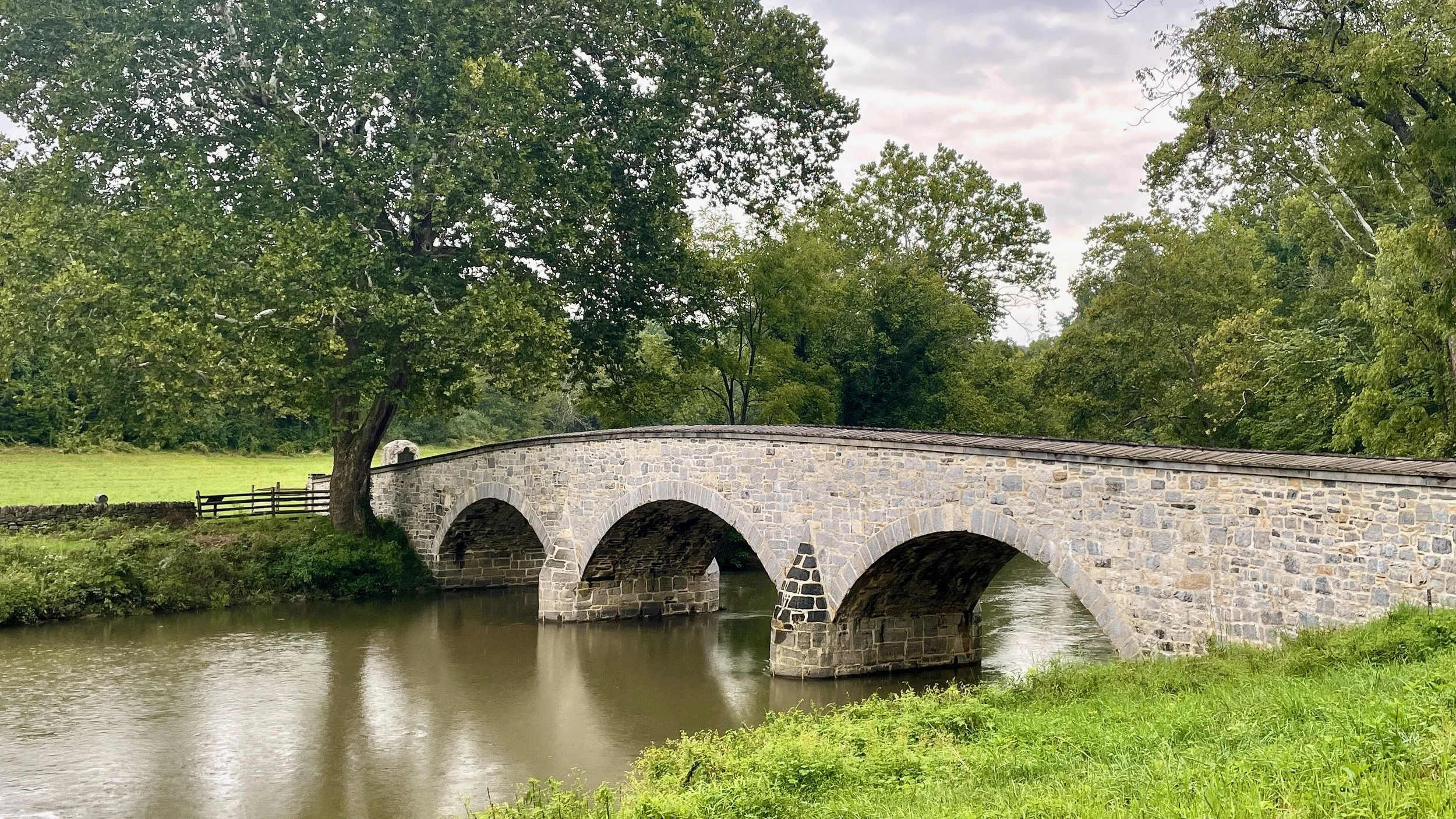Harpers Ferry & Antietam Ramble
Join me on a moving ramble to two Civil War-era sites at the heart of America’s struggle to secure liberty and justice for all: Harper’s Ferry and Antietam Battlefield.
I will pick you up at your D.C. area hotel or an agreed meeting place, and we will head west through the Maryland countryside for this full-day adventure.
Harper’s Ferry, situated at the confluence of the Shenandoah and Potomac Rivers, was a bustling industrial town in 1859, the national center for military weapons manufacturing. Radical abolitionist John Brown selected it as the staging place for a planned uprising of slaves, whom he hoped to arm and lead in battle against their masters.
We will visit several museums relating the stories of the disastrous raid that unfolded here on October 1859, including John Brown’s Fort, the fire engine house positioned at the entry to the armory complex, where Brown and his supporters were eventually overwhelmed by U.S. Marines under the command of future Confederate general Robert E. Lee.
Brown’s execution at nearby Charles Town six weeks later galvanized the nation, with some seeing him as a martyr for liberty, and others claiming secession was the only way to save their culture from violent overthrow. His raid would become a primary cause of the Civil War.
We will trace the war’s impact on the town, which changed hands between Union and Confederate forces eight times, and close our visit with a climb up to Jefferson Rock, enjoying the view of the rivers and surrounding mountains acclaimed by our third president as a young man as “one of the most stupendous views in nature.”
We continue to picturesque Shepherdstown, a colonial-era town further up the Potomac for a lunch of local specialties in a restored historic building (at the traveler’s expense).
The next stop is Antietam Battlefield, the site of the Civil War’s bloodiest single day, September 17, 1862. We begin at the Visitor’s Center for an overview of General Robert E. Lee’s daring Maryland Campaign, which led to the clash in these peaceful farm fields.
We will trace the story of the battle with visits to several well-preserved sites that are deeply rooted in Civil War lore. First, we visit the Cornfield and the Dunker Church, where battle began as dawn broke on September 17. We continue to the Sunken Road, better known as “Bloody Lane,” a defensive trench where more than 2000 Confederate soldiers were killed or wounded at what became the battle’s turning point. A final stop is at iconic Burnside Bridge, where thousands of Union soldiers were picked off by Confederate sharpshooters while trying to cross Antietam Creek.
The battlefield is relatively untouched by the changes of the passing decades, aside from a series of monuments erected in later generations to commemorate fallen comrades and heroic moments.
Though generally considered a military draw, Lee’s decision to retreat back into Virginia spared Washington from the threat of invasion, and helped to convince Abraham Lincoln to move forward with plans to sign an Emancipation Proclamation, freeing the slaves and changing the meaning of this bitter conflict.
A series of poignant photographs of the dead taken by Matthew Brady after the battle would also transform public understanding of the war’s brutality. In a single day of fighting, nearly 23,000 men were killed or wounded, making September 17, 1862 the bloodiest day in American military history
After some time for reflection in the nearby Antietam National Cemetery, where nearly 5000 of the Union dead are buried, we return through the Maryland countryside to your Washington D.C. hotel or an agreed meeting spot.
Includes admission to all museums. This trip usually departs at 8:00 a.m.
Please contact me directly to arrange rambles for groups of more than seven.






